Welcome to my monthly series about how I grow a year-round garden in a sub-tropical climate. These entries are from my personal garden journal that I keep in a simple spiral notebook. I’ll also share with you gardening tips, monthly harvests, and my favorite resources related to the season.
Here’s September’s notes:
Journal Entries
Week 1
My extra day off work during the Labor Day holiday was put to good use by working in the garden. I started my weekend by planting the Egyptian Spinach seedlings along the east fence. This new-to-me plant is easy to grow and makes a great addition to salads. I never thought I’d be able to grow salad greens in our hot summer weather, but this mild-flavored green has been a great addition to salads all season-long. It is a traditional food in Egypt, usually cooked as a stew or soup. You can learn more about it from this Texas A&M publication.
That same morning, I spent over an hour trimming back passion fruit vines and cutting out dead blackberry canes. Both plants have roots next to the compost pile and have been growing like crazy this year!
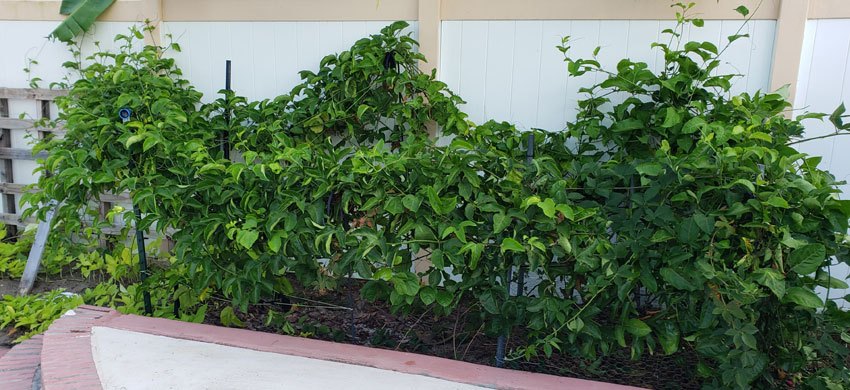
Several herbs including the peppermint and basil I repotted in larger pots. I grow them near the house in an area that gets shade in the afternoon and evening, and full morning sun.
This was the last weekend of an 8-week organic pest prevention program I’ve been using to protect my citrus trees. There had been extensive damage from leaf miners and rust mites on my lemon trees. If you’re growing lemons or other citrus, you can learn a lot from this University of Florida IFAS Extension publication: Lemon Growing in the Florida Home Landscape.
Week 2
The roselles have been blossoming and I’ve started harvesting their deep red calyxes to dry for teas. All of my roselle plants are from cuttings I took from plants I grew in the spring. They like their 5-gallon bucket “pots” and have produced well. I’m saving a lot of the seeds for next year.
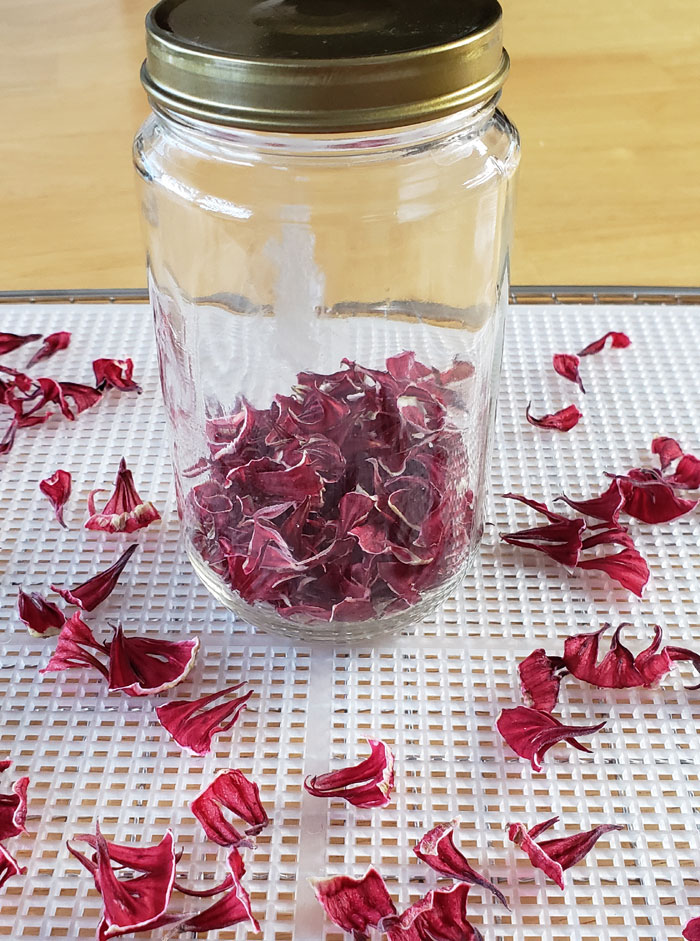
On the 8th, I planted fourteen Brickyard variety tomato seeds. I started them in a seed tray filled with seed-starter mix, set them on a heat mat, and placed a clear plastic dome over them. These Brickyards grew great for me last fall and winter. I’m looking forward to fresh garden tomatoes again in a couple of months.
Week 3
The Seminole pumpkins started crawling and climbing all around the garden again. It seems like they would grow a foot or more in a day! Every morning there were several new flowers opening. Most were male flowers, but occasionally I’d see a new female flower with a tiny new pumpkin appearing. Unfortunately, the new pumpkins would often get blossom-end rot, about 1 in 5 survived. They have spread to places I’d never intended to grow a garden, so there’s plenty of Florida “sugar-sand” or landscape mulch where they’ve spread out and put down roots, instead of healthy soil.
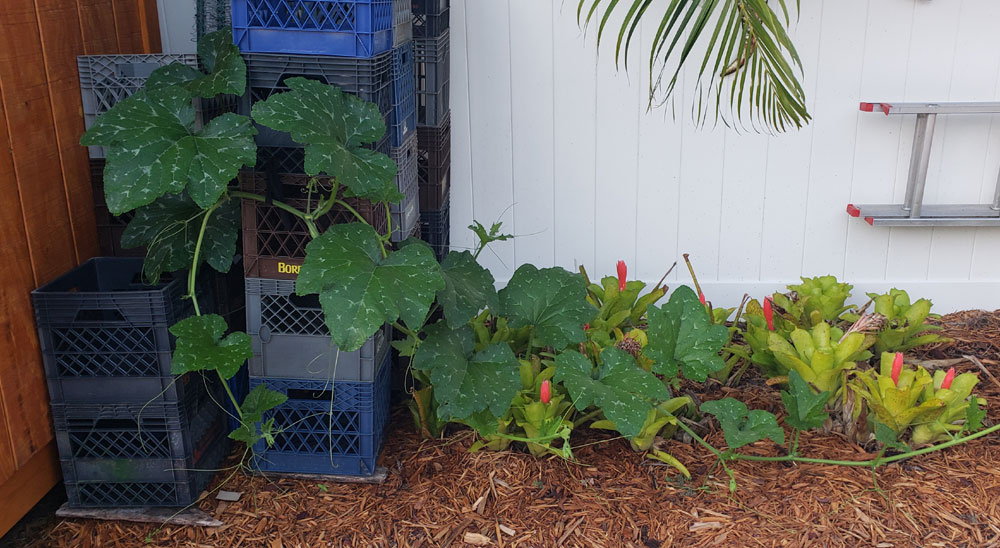
This month, I spent time researching citrus growing and problems, and started gathering information to create a 3-ring binder of information for growing all of my fruits. From my research, I learned a lot about Citrus Greening, nutrient deficiencies and other citrus tree problems. I also decided it was time to thin out my almost two-year old trees, and give them a proper pruning.
Saturday, the 18th was “repotting day.” I repotted the last of my 3 mulberry cuttings I had sprouted back in July. I also repotted all of the pepper plants to reinvigorate them for the fall/winter growing season. They were getting root-bound in their small pots. I’m looking forward to eventually having raised beds instead of pots for most of my edible plants.
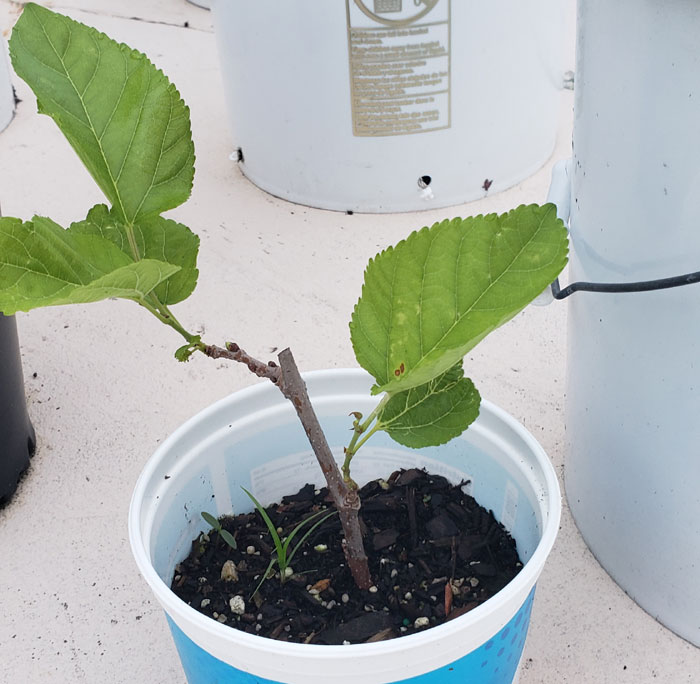
The cranberry hibiscus cuttings had also grown large enough to plant in the garden, so I found places to “tuck them in” around the garden.
Beautyberries continued to gradually ripen, and I’d harvest them about once a week. Once they were rinsed and sorted, I’d put the berries in the freezer until I had enough to make some jelly.
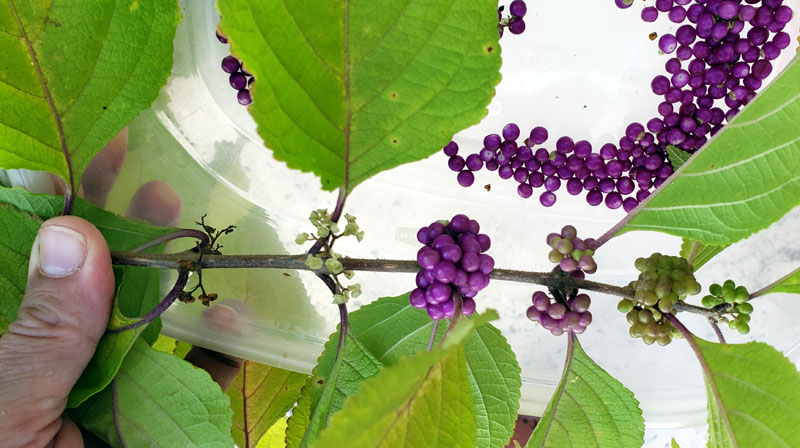
Edibles that were blossoming and putting on fruit this month included: Egyptian spinach, peppers and jalapenos, roselle, Seminole pumpkin, passionfruit, basil, and sweet potatoes.
Week 4
The last weekend of the month, I went to a local event – Meet Florida Meat 2021, sponsored by floridafarmfinder.com. It was a great chance to meet local farmers and ranchers, purchase locally raised meats and produce, fruit and vegetable plants, and hand-crafted items. I bought a Giant Finger Lime tree from Nick’s Edibles. Nick gave me excellent information about how to grow my lime tree. I planted it in a 20-gallon container using a mixture of potting soil, cactus/citrus soil, and a bit of bonemeal. I gave it a nice 3–4-inch layer of mulch on top. I’m looking forward to purchasing more trees and edible plants from him in the future.
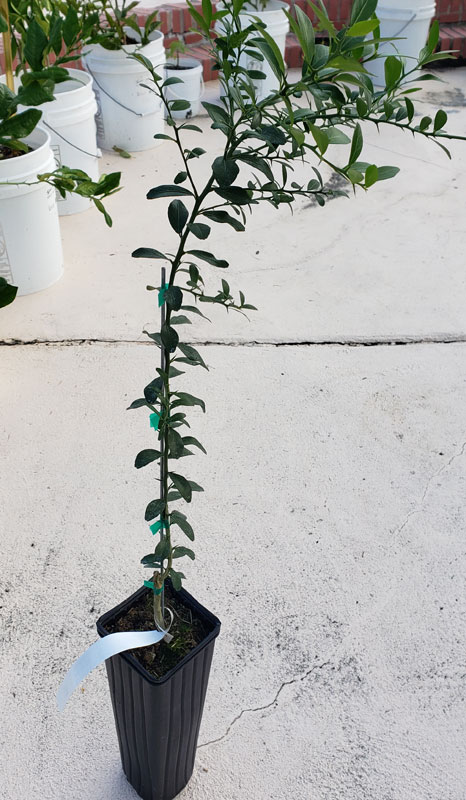
Harvest Summary for September
Food Harvested
- Egyptian spinach
- Roselle calyxes for tea
- Peppermint, and cranberry hibiscus leaves for tea
- Beautyberries
- 1 green pepper
- Several jalapenos
Seeds Saved
- Chicory
- Zinnia
- Roselle
- Seminole pumpkin (from a pumpkin I had harvested earlier in the year)
Gardening Resources
- Grow Lemons in the Home Landscape (EDIS|IFAS publication)
- Florida Farm Finder
- Nick’s Edibles
- Growing and Using Molokhia, also known as “Egyptian Spinach”
- Finger Limes
Final Thoughts…
September is a transitional time here in Central Florida. Many people I know have started growing cool-weather plants for our fall/winter gardening season, our most prolific vegetable production time of the year. Most of the warm-weather crops are ready to harvest or, more likely, ready for the compost pile.
Tomatoes and cabbages are the only new plants I’ll be putting in the garden this autumn. There’s plenty still waiting for me to harvest including sweet potatoes and Seminole pumpkins which have taken over more than half my in-ground garden space.
You can read about what I did in last year’s fall garden here: Garden Journal September 2020.
Thanks for joining me on the journey.
Happy Gardening!
Alisa